Industrial melanism may be defined as a proportional increase of dark, or melanin, pigments in individuals of a population, caused by changes in the environment resulting from industrial pollution. Both increases in the frequencies of distinct melanic forms and the general darkening of some or all forms within a population may be involved.
The increase in dark forms of some species of moth in industrial regions of Western Europe, and latterly elsewhere, has provided some of the best known, most easily understood, and most often quoted examples of evolution in action. Increases in pollution following the industrial revolution led to changes in the environment. In particular, sulfur dioxide denuded trees and other substrates of lichens, while particulate air pollution blackened the resulting surfaces. In response to these changes, the color patterns of many species of moth and some other invertebrates that rely on camouflage for defense against some predators have changed, becoming darker, in line with the darkening of the substrates that they rest upon by day. These changes have occurred largely in the past 150 years and are cited as examples that illustrate the central mechanism of Charles Darwin’s theory of evolution: natural selection.
TYPES OF INDUSTRIAL MELANISM
Three categories of industrial melanism have been recognized:
A. Full industrial melanic polymorphism involves distinct melanic forms that have arisen since the industrial revolution and have increased as a consequence of the effects of industrialization on the environment.
B. Partial industrial melanic polymorphism involves polymorphic species that had distinct melanic forms prior to the industrial revolution.
These forms have increased in frequency following and as a consequence of the effects of industrialization. C. Polygenic industrial melanism involves species in which the average ground color of some or all members of a population has darkened gradually as a consequence of the effects of industrialization.
It should be noted that melanism is a common phenomenon throughout the animal kingdom, with many factors unrelated to industrialization or pollution influencing the success of melanic forms in some species, including humans.
FULL INDUSTRIAL MELANIC POLYMORPHISM
The Peppered Moth
The peppered moth, Biston betularia, has dominated the literature on industrial melanism. In Britain, the ancestral form of this species (form t ypica) is white, liberally speckled with dark brown or black scales (Fig. 1). In 1848, a predominantly black form of B. betularia, form carbonaria (Fig. 2) , was recorded in Manchester, England. Within 50 years, 98% of Mancunian peppered moths were black. From this original location, carbonaria spread to many other parts of Britain. In 1896, the renowned Victorian lepidopterist J. W
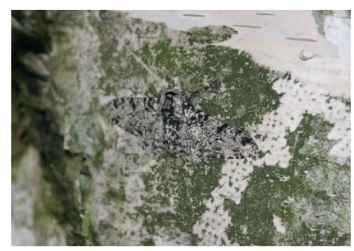
FIGURE 1 The typical form of the peppered moth, B. betularia.
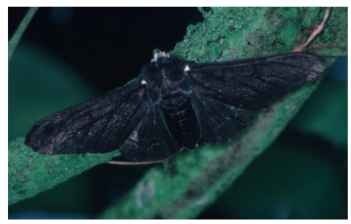
FIGURE 2 The carbonaria form of the peppered moth.
Tutt suggested that camouflage and bird predation could be involved in the spread of carbonaria. Arguing that the typical form was camouflaged well on surfaces covered by lichens, he noted that many natural surfaces had changed as a consequence of pollutants resulting from heavy industry. In particular, the combined effects of sulfur dioxide, which killed foliose lichens, and soot fallout, which blackened the denuded surfaces, had led to darker and more uniform substrates. He stated that on these surfaces carbonaria would be better camouflaged than typica and so gain protection from bird predation. Natural selection, through the medium of differential bird preda-tion, augmented by “hereditary tendency,” had led to an increase in the frequency of the black form.
Tutt’s hypothesis was largely rejected for over 50 years because most entomologists and ornithologists concurred in the view that birds are not major predators of cryptic, day-resting moths. A variety of other explanations for the increase in melanic forms of some moths were thus put forward during this period (pollutants acting as mutagenic agents, Lamarckian evolution, and heterozygote advantage).
One important advance during this period was the calculation by Haldane in 1924 that carbonaria would have to have been 1.5 times as fit as typica to account for the rapidity of the rise in carbonaria frequency in Manchester. This fitness difference was much higher than most evolutionary biologists of the time thought feasible.
In the 1950s, Tutt’s bird predation explanation of industrial melanism was tested by scientific experimentation. Dr. Bernard Kettlewell, using direct observation of the predation of live moths released onto tree trunks, and mark-release-recapture techniques, in two populations, one in a polluted and the other in a nonpolluted oak woodland, obtained strong evidence to support Tutt’s differential predation hypothesis. Both experiments showed that the typica form of the moth had lower fitness than carbonaria in the polluted woodland but a higher fitness in the nonpolluted wood. It was the fact that Kettlewell obtained reciprocal results in the two environments that made his conclusions convincing. Kettlewell also mapped the frequency of carbonaria against sulfur dioxide and soot fallout, finding a significant correlation between the frequency of carbonaria and both pollutants, that with sulfur dioxide being strongest.
Kettlewell’s work made the case of industrial melanism in the peppered moth the most cited example of evolution in action through an identified agent of natural selection: differential bird predation. As Professor Sewall Wright wrote in 1978, industrial melanism in the peppered moth provided “the clearest case in which a conspicuous evolutionary process has actually been witnessed.” Here was Darwin’s missing evidence.
Since the 1960s, many other studies have been carried out on the peppered moth. Some have focused on the fine details of the case, including the intermediate form insularia ( Fig. 3 ). Others have considered how the peppered moth has been affected by antipollution legislation, while still others have addressed criticisms of some of Kettlewell’s experimental protocols.
The main elements of the peppered moth case as they are now known are:
1. The melanic, carbonaria form of the peppered moth was first recorded in 1848.
2. This carbonaria form is controlled by a mutant allele of a single gene, which is genetically dominant to the allele controlling the pale typica form.
3. The carbonaria form spread and increased rapidly in industrial regions of Britain but not in rural regions.
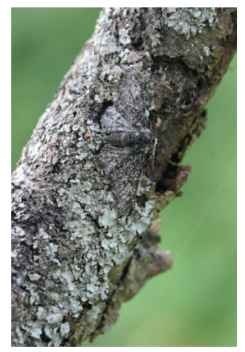
FIGURE 3 The peppered moth has a third intermediate form, insularia.
4. Peppered moths rest by day on the bark of trees.
5. Birds find peppered moths on tree bark and eat them.
6. The likelihood of a moth being found by a bird depends on its degree of camouflage.
7. Nonmelanic peppered moths are better camouflaged than mela-nics on lichen-covered tree bark. Melanic peppered moths are better camouflaged than nonmelanics in areas where tree bark has been denuded of lichens and blackened by soot fallout.
8. The frequencies of melanic and nonmelanic moths in a particular area depend on the level of bird predation of each form and the rate of migration of moths into the area from adjacent districts in which the form frequencies are different.
9. Following the Clean Air Acts and other antipollution legislation of the 1950s and subsequently, levels of pollution in Britain have declined, bark is no longer heavily soot covered, and lichens have regrown to a significant extent. Since the mid-1960s, the frequencies of carbonaria have declined substantially in Britain.
10. Rates of decline are broadly in line with theoretical predictions from computer simulations. If the decline in carbonaria continues at its present rate, this form will be reduced in Britain to the status of a rare mutation by 2020.
11. Similar declines in melanic frequencies correlated to declines in pollution levels have been observed in Holland and in the United States.
Data on the declines of the melanic forms of the peppered moth in Britain, continental Europe, and America are important for three reasons. First, they show that evolution is not a one-way process. Evolutionary changes can be reversed if the selective factors that lead to them are reversed. Second, the data sets from different populations in Europe and America , in effect, replicate natural experiments. The consistency in the patterns of increase and decrease in the frequencies of melanic forms correlated to pollution
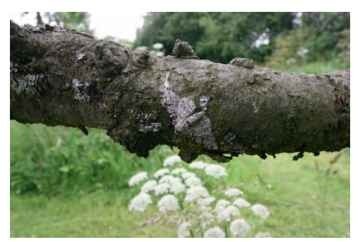
FIGURE 4 A peppered moth in its most common resting position, on a lateral tree branch.
levels adds weight to the selective explanation of the evolutionary changes observed. Third, the accord between predicted decreases in melanic frequencies and the observed frequencies currently being recorded argues that the factors incorporated into the models are broadly correct.
Since 1998, the case of the peppered moth has been attacked by antievolution lobbyists, who have emphasized both weaknesses in Kettlewell’s experimental procedures and differences in opinions between scientists who have worked on or commented on the case. The case has thus been at the center of the evolution vs. creation debate, with calls being made, particularly in the United States, for it to be removed from biology text topics. It is notable that the focus of these criticisms is almost invariably the well-known experiments of Kettlewell, whereas later independent experiments in which improved protocols have been used, and which have led to the same basic deductions as Kettlewell’s work, are not cited. The controversy took another turn in 2002, when a journalist, Judith Hooper, published a topic in which she makes thinly veiled accusations of data fudging and scientific fraud aimed at Kettlewell, and a conspiracy of silence aimed at the scientists who have conducted the experimental work on the peppered moth.
The controversy over the peppered moth case has engendered new interest in the case, with scientific historians examining the accusations of fraud aimed at Kettlewell. The conclusion of these examinations is that there is not one shred of evidence to support Hooper’s accusations. In addition, a new series of experiments have been undertaken to address the flaws in Kettlewell’s experiments and address other issues raised by the antievolution lobby. In brief, these have shown that (1) the peppered moths do rest by day on the bark of deciduous trees, most commonly on the underside of lateral branches (Fig. 4) but also sometimes on the trunks; (2) that bats feeding on peppered moths at night do not differentiate between the forms of the peppered moth, refuting the suggestion that they, rather than birds, could be the agent of selection; (3) that greater levels of bird predation of carbonaria, compared with typica, in a 6-year period from 2002 to 2007, is entirely sufficient to explain the observed decline in carbonaria frequency in Cambridge, England, over this period. This work fully supports Tutt’s differential bird predation hypothesis.

FIGURE 5 Nonmelanic and melanic forms of the brindled beauty, L. hirtaria.
Other Examples of Full Industrial Melanic Polymorphism
The vast majority of research and comment on industrial melanism has been focused on the peppered moth. However, the case of the peppered moth is not unique. A small number of other examples of full industrial melanic polymorphism are known. The mela-nic forms in most of these cases are controlled by dominant alleles of single genes. An exception is that of the brindled beauty, Lycia hirtaria, in which the melanic form nigra ( Fig. 5 ) is controlled by a recessive allele. That most recent melanic forms are genetically dominant is not surprising because a dominant mutation will be fully expressed as soon as it arises and will quickly be favored by selection if advantageous. Recessive mutations would not be exposed to selection until they occurred in homozygotes in which their effects would be expressed phenotypically.
In some species showing full industrial melanic polymorphism, such as the lobster moth, Stauropus fagi, melanism developed at roughly the same time as in the peppered moth. In others, industrial melanism has developed much more recently, as in the cases of the sprawler, Brachionycha sphinx, and the early grey, Xylocampa areola, in which industrial melanism developed only in the second half of the 20th century. The reason that industrial melanism did not evolve earlier in these species is probably serendipitous: a melanic mutation simply did not occur previously in an appropriate population.
The different timings of the initial occurrence of industrial mela-nics of different species help emphasize that natural selection cannot cause change unless phenotypic variation exists. This is manifest in the oak beauty moth, Biston strataria. the closest British relative of the peppered moth. The oak beauty has a melanic form, melanaria, which is a common industrial melanic in Holland, but has never been recorded, except as a rare mutation, in Britain. In terms of its ecology, behavior, and distribution, the oak beauty is similar to the peppered moth. However, the melanaria mutation seems never to have arisen in Britain in favorable circumstances nor has this form reached Britain from continental Europe as a migrant. Melanism in the oak beauty in Europe can be contrasted with that of another moth, the figure of eighty, Tethea ocularis. The melanic form, fusca, of this species was known in Belgium and Holland in the early part of the 20th century but was absent from Britain. This form arrived in southern England, by migration, in the mid-1940s. Following its arrival, f. fusca spread to many industrial parts of Britain and increased in frequency rapidly, although its frequency is now declining again in response to reductions in pollution.
The current declines in melanism seen in the peppered moth, the figure of eighty, and several other species, following antipollution legislation, suggest that future studies of industrial melanism may have to shift to countries in which industrialization is still increasing and antipollution measures are as yet limited.
PARTIAL INDUSTRIAL MELANIC POLYMORPHISM
Melanic forms of many species of moth are independent of industrialization. The factors that can favor melanism are numerous and varied. These have been discussed in detail by Kettlewell and Majerus. Their relevance to industrial melanism is that in some moths, the presence of melanic forms prior to, and independent of, industrialization provided a repository of melanic variants that were favored as pollution levels increased.
Indeed, it is likely that the majority of moths that exhibit melanic polymorphism, with melanic frequency correlated to pollution levels, had melanic forms occurring at relatively low equilibrium frequencies prior to the industrial revolution. Changes in the environment resulting from increased pollution favored these dark forms and their frequencies increased. The willow beauty, Peribatodes rhomboidaria, well illustrates this idea. In Britain, this species has long had a non-industrial melanic form, perfumaria. The perfumaria form greatly increased in frequency in industrial regions in the late 19th century. In the 20th century, perfumaria, which still occurs at low frequency in some rural areas, particularly in Scotland, was replaced in industrial areas, but not elsewhere, by an even darker form, f. rebeli. Here then, f. perfumaria should be regarded as a partial industrial mela-nic, while f. rebeli is a full industrial melanic.
Many probable instances of partial industrial melanic polymorphism could be cited, but rather few of the species that fall into this class of melanism have been investigated in depth. Exceptions are the pale brindled beauty, Phigalia pilosaria (Fig. 6A and 6B); the mottled beauty, Alcis repandata; and the green brindled crescent, Allophyes oxyacanthae. All are bark-resters, the increase in melanics in industrial regions being attributed to increased crypsis.
Some of these species show morph-specific habitat preferences. Morph-specific habitat preferences in Lepidoptera showing melanic polymorphism were first suggested to explain abrupt differences in melanic frequencies of the mottled beauty and the tawny-barred angle, Semiothisa liturata, either side of sharp habitat boundaries. Such differences have subsequently been recorded in 14 species, in all cases melanics having higher frequencies in woodland with dense canopies than in adjacent more open habitats.
Many species that now have industrial melanics first evolved melanism in specific ecological circumstances prior to industrialization. It is known, for example, that a number of species now show mela-nic polymorphism in unpolluted ancient coniferous forests, such as Rannoch Black Wood in Scotland. Similar habitats were more widespread in the past and are likely to have supported melanic forms. These melanic forms would have been at a selective disadvantage if they moved from areas with the specific ecological circumstances to which they were adapted. Consequently, the melanics evolved behaviors that restricted them to such habitats. Recent changes in forestry and land usage and increases in pollution have provided new habitats (e.g., conifer plantations and polluted woodlands) with ecological conditions that favor melanics. The melanics have consequently spread
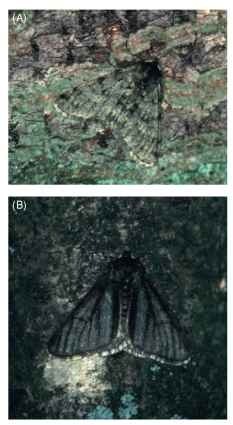
FIGURE 6 Nonmelanic (A) and melanic (B) forms of the pale brindled beauty, P. pilosaria.
and risen in frequency, producing examples of partial industrial mel-anic polymorphism in which morph-specific habitat preferences are retained to some extent.
POLYGENIC INDUSTRIAL MELANISM
Of all categories of melanism, polygenic industrial melanism has been the least considered and is the most difficult to address. Examination of specimens collected over the past century and a half suggests that many species have experienced a gradual darkening of the colors and loss of patterning in industrial regions, irrespective of morph. Although some of this change may be attributed to the gradual fading that occurs in museum specimens with time, it is difficult to ascribe all of the differences to this phenomenon. Comparison of series of specimens of six species, from rural and industrial regions, collected between 1880 and 1914 with those collected between 1992 and 1996 showed that the ground color had darkened more in industrial regions than in the rural areas.
This gradual darkening is probably the result of selection acting on polygenic variation. Small variations in the color patterns of many species are known to be controlled by many genes, each having a small effect. The selective predation of lighter and thus less cryptic forms in regions affected by particulate air pollution will result in those alleles which produce darker morphs increasing in frequency. It is difficult to see how this hypothesis can be tested. However, if it is correct, the recent decrease in pollution should lead to a reversal of this trend, with ground colors lightening and patterns becoming more clearly defined again. Novel, digital methods of measuring the spectral reflectance of surfaces and storing data should allow measurement without reliance on museum specimens or photographs, both of which may fade with time.
MELANISM AND THE STUDY OF EVOLUTION
The significance of industrial melanism in the Lepidoptera to evolutionary biology has been considerable. It has provided one of the best observed examples of evolutionary change caused by natural selection and has shown that Darwinian selection can be a strong force. In the peppered moth, differential bird predation, together with migration, has been primarily responsible for the rise and fall of the melanic form carbonaria.
Although the story of the peppered moth is undoubtedly more complex than usually related, data accumulated over the past 50 years have done nothing to undermine Tutt’s initial hypothesis of the role of differential bird predation or Kettlewell’s experimental demonstrations of this role.
Within the Lepidoptera, the factors responsible for melanism and the forms of melanism that result are very variable. Because a great variety of factors may promote melanism, it may be misleading to extrapolate from one population to another, let alone from one species to another. Even within one class of melanism, the relative influence of different aspects of a species’ biology will vary between species. Each species that has evolved melanic forms will have done so in the presence of a variety of different intrinsic and extrinsic circumstances. The differences in the factors affecting melanism in even the few well-studied cases suggest that there is still enormous scope for original research into this phenomenon. However, as the frequencies of dark forms of full industrial melanics decline in North America and Europe with reductions in pollution, the focus of such work may have to shift to the developing industrial nations of Asia and South America.
